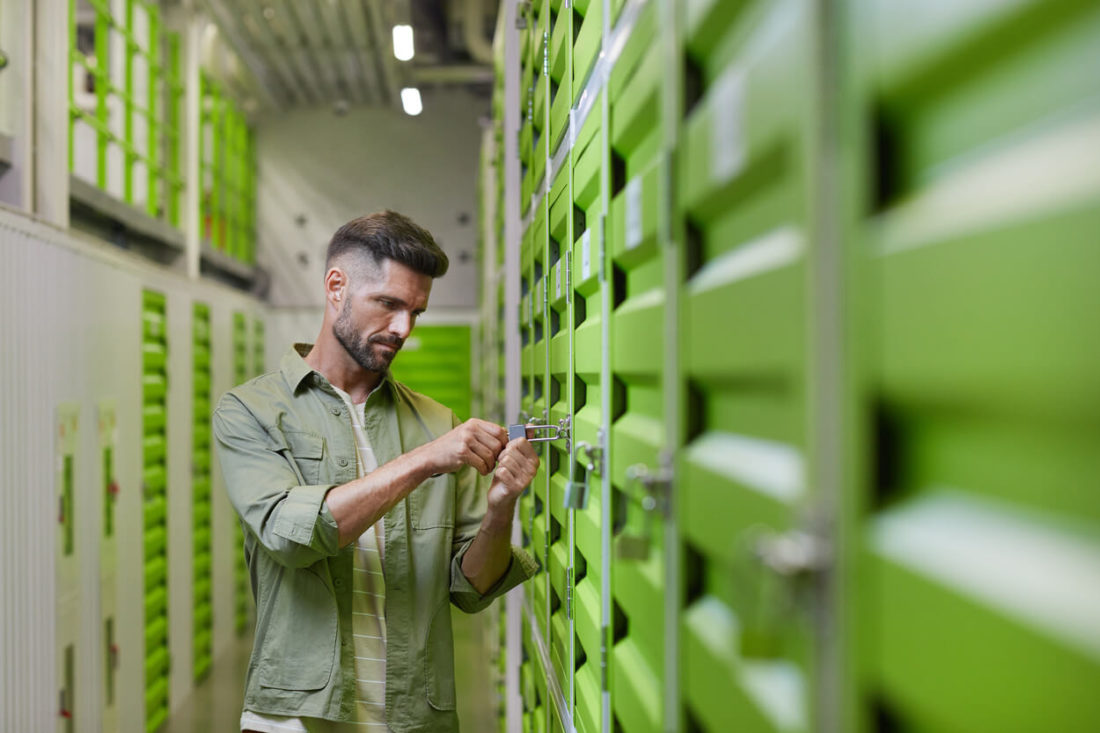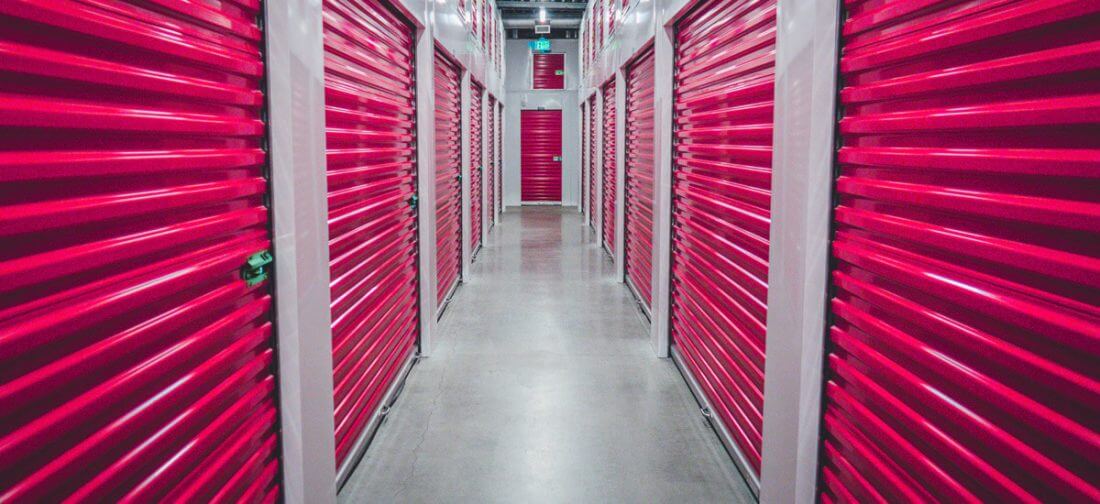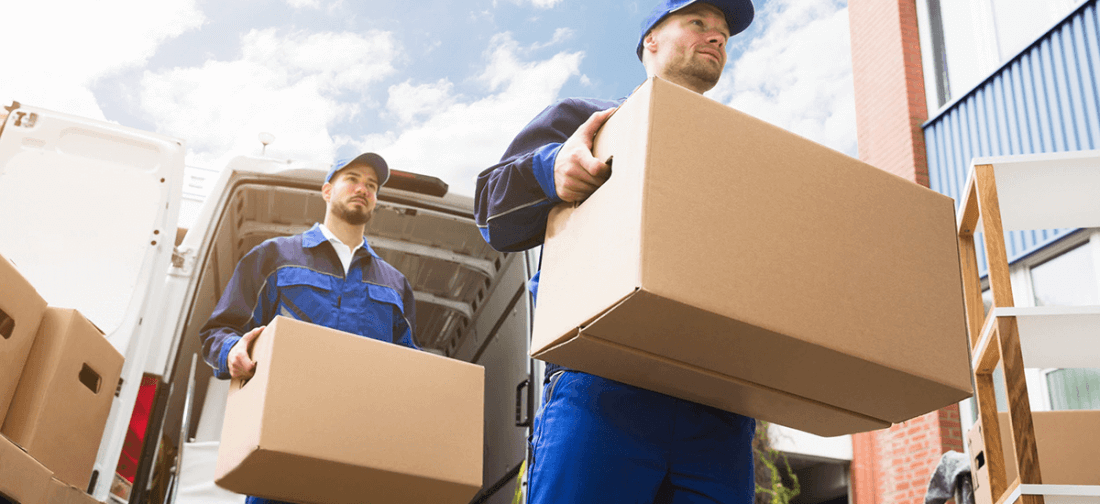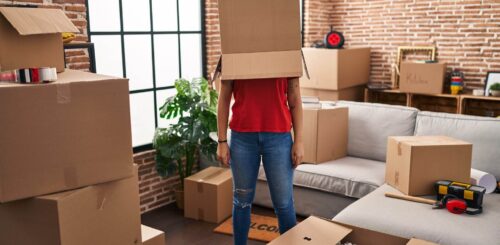When it’s time to relocate, you will have many questions and concerns. These processes demand careful planning, thorough researching, patience, and gathering some insights. One of the aspects you will have to take good care of is how to protect items in storage units. Indeed, you will need some useful tips to cover this topic properly. And this article will help you gain perspective on this crucial matter.


If you follow our pieces of advice, you will have no problem preserving financially and sentimentally valuable possessions. From your kids’ drawings to your vintage cabinets or delicate cutlery – we’ve got you covered. Ultimately, when you hire skilled and reliable long-distance movers to ease the whole process, your stuff will be extra secured and safe from harm. Let’s get started.
Which Items Will You Put in a Storage Unit?
Choosing an adequate space to store your belongings goes hand in hand with making decisions on what to keep when you move. The drill is quite simple – the more stuff you want to be stored, the bigger unit you’ll need. And you know the math – that will add to your relocation expenses. So, before you label an item as essential and determine to bring it to your new home, think twice. If it’s rarely used, outdated, or broken, you certainly won’t take it with you. And you won’t let it increase your costs. All of this means that you must sort your possessions and declutter your household before acquiring storage services.
If you have some stuff that’s still in good condition, and yet you don’t think they match your new style (or you simply don’t intend to use them), you can always sell or donate them. For instance, you could donate old appliances, clothes that no longer fit, massive pieces of furniture, and basically all unwanted items that could serve someone else well. Think and purge before you act. Save your money effortlessly.
Do a Research Before You Pick a Storage Unit
The first and most important step is to make sure to do your homework rightly. Do you know what can and can’t be stored inside your storehouse? Contact the facilities you have shortlisted and ask them to provide you with a list of restrictions. You should get familiar with all the rules and directions before you make a choice.
Dangerous things like fertilizers, paint, gasoline, chemicals, fireworks, or explosives are most likely forbidden. In short, flammable objects are always banned from storehouses. Dispose of them properly before you hire long-distance moving services.
Bonus tip: There is another meticulous research you must do. Pick your cross-country movers carefully and avoid relocation scams. Before you hire a team, check out at least three companies and get free quotes.


Make an Inventory List Before You Start Packing
Prior to boxing up and wrapping your possessions for transport, you must learn how to do household inventory. This is an essential step that will help you throughout the entire process. It will let you keep track of all your stuff and it will come in handy when you reach your destination. Having everything arranged and categorized is the key to unpack after the move quickly and stress-free. In addition to it, if anything gets lost or damaged along the way, you will have proof of its previous condition and will be entitled to receive remuneration.
If you want to try out an app that will help you track and organize your stuff, have a look at this video.
Tips You Will Need to Pack Properly (and Quickly)
According to Statista, the local and long-distance moving industry in the US reached a market size of 18.4 billion dollars. If you are about to move and you want to be sure to relocate efficiently, you will have to follow some proven advice to get packed:
- Start to pack at least three weeks before the move,
- Create a schedule and stick to it,
- Write down your goals, inventory lists, and checklists,
- Start with sorting and decluttering,
- Commence by checking your most cluttered areas, such as a basement, garage, and attic,
- Get quality supplies and materials,
- Don’t be afraid to improvise and utilize the stuff you already have,
- Label every box correctly with a permanent marker,
- Leave a box or bag with the essentials,
- Be sure that all of your belongings are clean and dry before you get them packed.
How to Prepare Furniture for the Move
If you want to move and store your furniture correctly, you must learn the best ways to get packed for move and follow certain steps:
- Vacuum and brush every piece to remove any dust or dirt. Clean all the surfaces with a soft resolution of soap and water. Let everything dry thoroughly.
- Use protection spray and leather conditioner when suitable. Preserve any wooden pieces and surfaces with wax. That way, you will seal the wood and decrease the chance of getting mold. Wipe metal parts with oil to stop them from getting stains and rust.
- Firstly, you should disassemble bulky furniture pieces. Then, protect smaller components with bubble wrap or cloth. Pack all the loose bits from one item together. Place small hardware parts in sealable plastic bags and tape them to the corresponding movable.
- Cover all furniture with blankets or sheets and secure them with rubber bands or plastic wrap.
How to Get Your Electronics Ready and Pack them Correctly
If you plan to get your computer packed and ready to be stored safely, you have to be extra careful and pick suitable moving supplies. The same goes for the rest of your electronic devices.
First of all, you must be sure that all electronics and equipment are spotless and dust-free. It is best to get them packed and shipped in their original boxes. If you don’t have them, find some of similar sizes and quality. Don’t forget to fill all empty spaces in each box with crumpled packing paper or bubble wrap with an anti-static structure. Seal the cartons tightly so that no moisture can harm your stored electronics.
How to Prepare Your Clothing Items
When you start to get your clothes packed for the move, you must follow some proven patterns. Keeping them safe from dirt, dust, moisture, and other external factors and conditions while storing them is crucial. However, if they are about to be stored (especially for a more lengthy period), keep this in mind – don’t just fold them and stuff them in boxes. Keep them wrinkle-free by hanging them on rails. Wrap your most delicate garments to secure them additionally from dust and moisture. When getting your packing supplies ready, look for the best-sized boxes, which will include special wardrobe-like crates for your clothes.


How to Protect Fragile Items in Moving
When you get to the point when you must get your kitchen items packed, you are about to deal with many fragile objects. You will have to package glasses, cups, and mugs carefully. Besides that, you are bound to get plates packed adequately to avoid shifting and breakage. Here’s how to do it:
- Wrap all fragile pieces separately with paper or bubble wrap for extra safety.
- Cover the bottom of each box with fit padding and use plenty of crumpled paper, bubble wrap, or towels and clothes. That way, you will provide more cushioning between them.
- Mark the boxes adequately and visibly.
- Set your plates, bowls, and saucer pans on their sides to avoid damage.
- Put cups and glasses with their rims down.
- Place small dishes inside large ones after getting them wrapped correctly.
- Watch out for the valuables, and pack dishes and glassware in special crates.
Although many sensitive objects are usually found in the kitchen, there is more to know.
How to Protect Framed Items When Moving
When it comes to getting paintings packed or dealing with packaging large mirrors, there are many preventive measures to take into account. These are the steps you should follow:
- Store all your paintings, mirrors, and framed photographs in specialized crates,
- Apply tape to create an “X” on the glass to stop the objects from shattering,
- Place flat cardboard chunks on both sides of the glass for best results and most safety,
- Keep all pieces of art or breakable collectibles in wooden crates.
Avoid These Self-Storage Mistakes
Now that we have gathered all the useful tips and packing strategies in one place, we can quickly sum up some of the most frequent mistakes:
- Skipping careful planning and research,
- Not having a sufficiently large unit,
- Getting packed for a short amount of time and forgetting about the effects your belongings could undergo in the long run,
- Forgetting about security, monitoring system, and climate control,
- Storing perishable foods, expired products, or anything that shouldn’t be stored,
- Not getting a dolly cart of help from friends or experienced long-distance movers for the logistics.
Avoid these slips at all costs. Be prepared and secure.
An Expert Tip to Gain Extra Space
The best way to boost space in your storage is to start at the bottom and keep stacking up. Place your most massive cases on the layer below. After that, you should begin to work your way up to the top and put your lightest belongings there. Don’t forget to leave a way to walk through and to keep essential things quickly obtainable.
Self-packers can install shelving in their improvised storage, or they can request their service provider to allow them to place some shelves.


Get Your Long-Distance Moving Insurance
Relocations are often stressful. Sometimes, they can be more challenging, expensive, or lengthy than you have initially planned. Picking a home, adjusting to a new town, or finding a job are some of the tasks that await. That is why you should try your best to make the process as smooth as possible. When picking the right long-distance movers, you should think about the relocation insurance they offer.
No matter how skilled they are, rare slips happen, and some possessions might be misplaced or damaged. If you choose a basic liability package, you will be entitled to a refund if those scenarios occur. There are other insurance packages you should explore, especially if you intend to acquire car shipping. Whichever your case is, you should get insured and reduce the tension you’d feel while your belongings are being stored or transported.


Follow These Guidelines to Learn How to Protect Items in Storage Units
If you follow these simple steps and rules, you can get packed and ready like a pro in no time. Your stuff will be placed into their containers correctly, and everything will be stored just as you intended. However, if you feel like you need help from a professional packer, get in touch with a competent crew and acquire partial or full packing services. That way, your belongings will unquestionably be ready for storing and in good condition when your brand-new home is ready for your move-in day.






